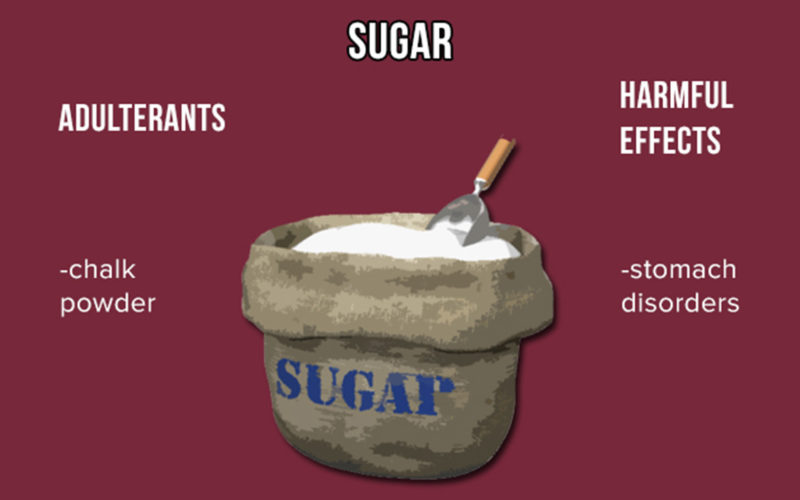With the alarming rate at which adulteration of food is increasing in India, it is not an exaggeration to say that almost nothing that we eat/drink daily is safe for our health. And what is further astonishing is that all the food items that I am referring to, make an essential part of our daily balanced diet.
Now while we cannot be really sure of when this flourishing business of food adulteration will reach its dead-end, it falls upon us to keep the safety of our health intact. And one of the most potential ways we can do so is by performing simple tests to see whether or not the food item is fit for consumption.
1. Milk

Test for your safety
- Put a drop of milk on a slanted surface. If the drop leaves a white trail, it’s a sign of pure milk. But, if it fails to leave the trail, it is adulterated.
- If the milk turns yellow when heated, and leaves a bitter and soapy kind of after taste, take it as a sure shot sign that it has synthetic substances added to it.
2. Coffee powder

Test for your safety
Sprinkle a small amount of coffee powder on the surface of water contained in a glass. The coffee will remain afloat whereas the chicory in it will sink to the bottom leaving behind a coloured trail.
3. Chilli powder

Test for your safety
Mix a spoonful of chilli powder in a glass full of water. If you spot a formation of coloured water extract, it is because the chilli powder is adulterated.
4. Turmeric powder

Test for your safety
Add a few drops of concentrated HCL in a test tube containing turmeric powder. Appearance of pink, purple, or violet hues in the mixture confirms adulteration.
5. Mustard seeds and oil

Test for your safety
Take a few seeds and crush them. The argemone seeds on being crushed will reveal a whitish structure on the inside. Mustard seeds, on the other hand, have a yellow inner surface.
6. Ice cream

Test for your safety
If the ice cream starts to froth on adding a few drops of lemon juice to it, it indicates the presence of washing powder in it.
7. Green chillies

Test for your safety
Soak a small cotton piece in paraffin and rub it against a small portion of the outer surface of green chilli or any other green vegetable for that matter. If the cotton turns green, it means that the vegetable is artificially coloured.
8. Ghee

Test for your safety
Add 1 ml of water to a test tube containing about 0.5 g of ghee and bring the mixture to boil. Once it cools, add a drop of iodine (or iodine tincture solution) to it. If the final output is blue in colour, then it is adulterated with starchy substances.
9. Sugar

Test for your safety
Unadulterated sugar, when added to a glass of water, will sink directly to the bottom. But if it has chalk powder in it, the adulterants will remain at the surface of the water.
10. Black pepper

Test for your safety
Add a few corns of pepper to alcohol. The pure corns will stay afloat whereas the pappaya seeds will sink.
11. Tea

Test for your safety
Sprinkle some tea powder on a damp blotting paper. Change in the colour of the blotting paper to something similar to yellow, orange, or red proves the presence of artificial colour in it.
One of the most common reasons behind food adulteration is to deceit the buyer of their money by luring them into buying a ‘good-looking’ food item. However, whatever maybe the reason behind this, it goes unsaid that an act of deliberately adding toxic substances to food items is an act of POISONING.




